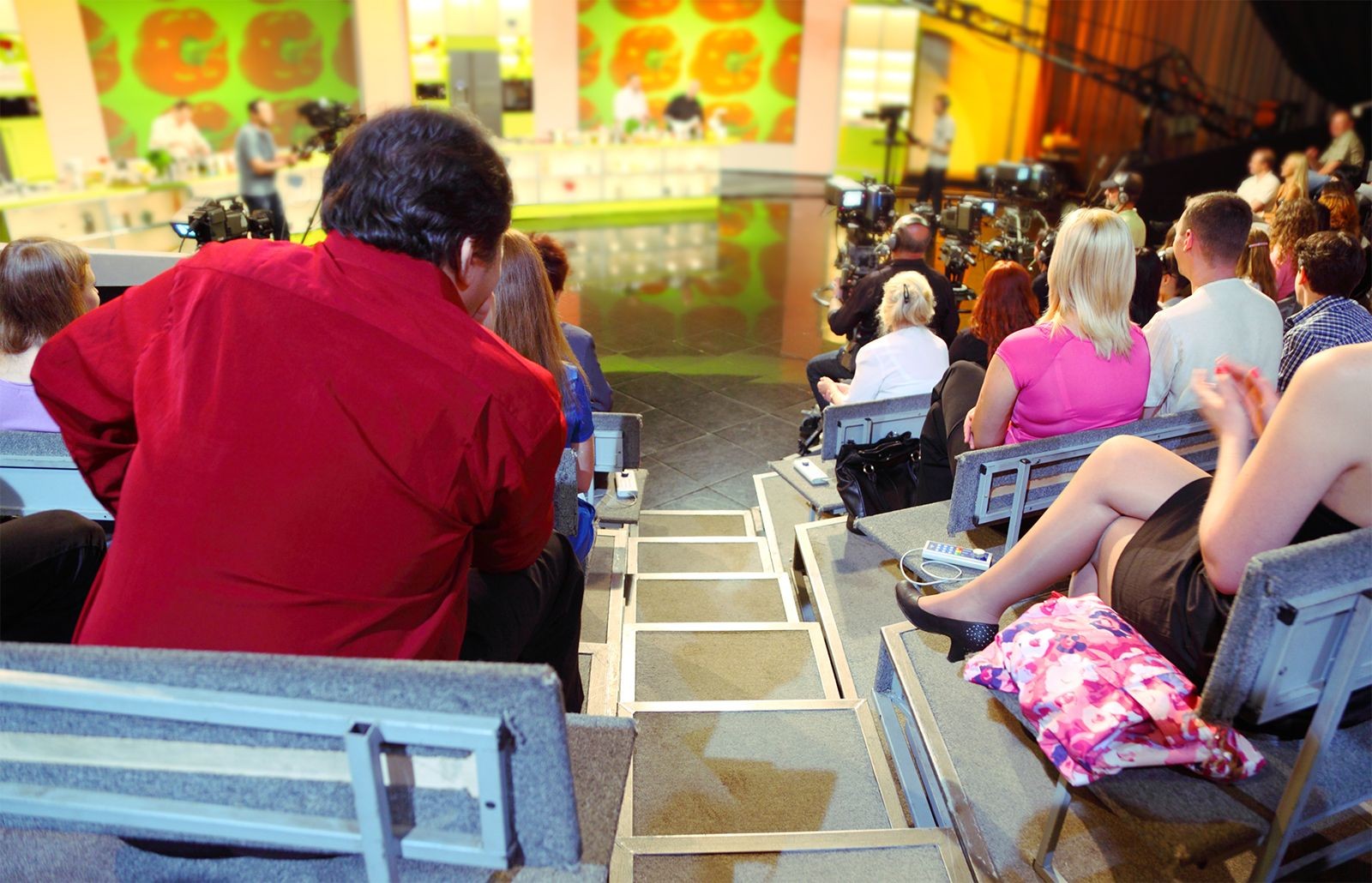Imagine creating the funniest sitcom, only to be met with silence from the studio audience. This scenario highlights the crucial role of laugh tracks in television comedy. Since the 1940s, these added sounds of laughter have been used to enhance the comedic effect of shows, even when the live audience’s reaction might not be as enthusiastic. But why exactly are laugh tracks used in sitcoms?
 A live studio audience reacting during the filming of a sitcom, illustrating the context where laugh tracks are often used to augment audience response.
A live studio audience reacting during the filming of a sitcom, illustrating the context where laugh tracks are often used to augment audience response.
Laugh tracks, also known as “sweetening,” were initially developed as a solution to inconsistent audience reactions. Sometimes, a live audience might not laugh as much as anticipated, or their reactions might not be picked up well by recording equipment. In these cases, laugh tracks were used to augment or even replace the audience’s natural response. This ensured that the comedic timing and impact of jokes were effectively conveyed to viewers at home.
Beyond fixing technical or audience response issues, laugh tracks serve a psychological purpose. The sound of others laughing can be contagious, influencing home viewers to perceive jokes as funnier and encouraging them to laugh along. It creates a sense of communal viewing, mimicking the experience of watching a comedy show in a theater with a large, reactive audience. This can make viewers feel more engaged and entertained, as if they are part of a larger, jovial group enjoying the show together.
The innovation of the laugh track is largely credited to sound engineer Charles Douglass, who developed a “laugh box” in 1953. This device allowed for the easy insertion of pre-recorded laughter at specific points in a show. Despite the artificial nature of canned laughter, television studios found it to be a valuable tool. Studies and industry experience indicated that the use of laugh tracks often correlated with higher viewership ratings and improved audience retention. Viewers were more likely to continue watching and rate shows with laugh tracks favorably.
While the use of laugh tracks has faced criticism and some viewers find them unnecessary or even irritating, they remain a significant part of sitcom history and continue to be used in some productions today. The intention behind their implementation is rooted in enhancing the comedic experience for the audience, aiming to create a more enjoyable and engaging viewing environment that encourages laughter and viewership.